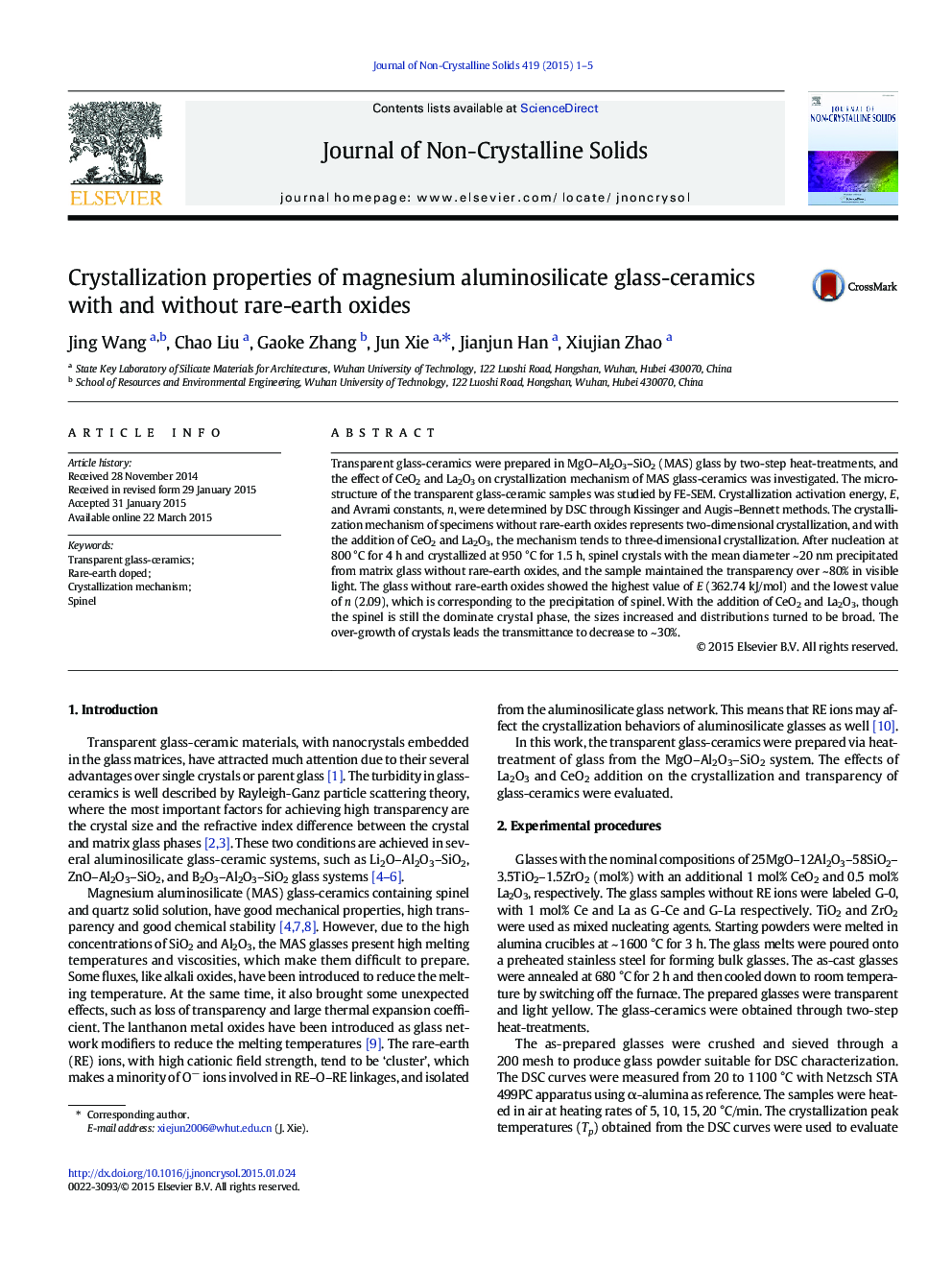| Article ID | Journal | Published Year | Pages | File Type |
|---|---|---|---|---|
| 1480730 | Journal of Non-Crystalline Solids | 2015 | 5 Pages |
•Glass-ceramics with ~ 80% transmittance in visible range were prepared.•Doping RE decreased the crystallization activation energy.•Doping RE makes the mechanism change from two- to three-dimensional crystallization.•Doping RE leads to the transmittance decreased to ~ 30%.
Transparent glass-ceramics were prepared in MgO–Al2O3–SiO2 (MAS) glass by two-step heat-treatments, and the effect of CeO2 and La2O3 on crystallization mechanism of MAS glass-ceramics was investigated. The micro-structure of the transparent glass-ceramic samples was studied by FE-SEM. Crystallization activation energy, E, and Avrami constants, n, were determined by DSC through Kissinger and Augis–Bennett methods. The crystallization mechanism of specimens without rare-earth oxides represents two-dimensional crystallization, and with the addition of CeO2 and La2O3, the mechanism tends to three-dimensional crystallization. After nucleation at 800 °C for 4 h and crystallized at 950 °C for 1.5 h, spinel crystals with the mean diameter ~ 20 nm precipitated from matrix glass without rare-earth oxides, and the sample maintained the transparency over ~ 80% in visible light. The glass without rare-earth oxides showed the highest value of E (362.74 kJ/mol) and the lowest value of n (2.09), which is corresponding to the precipitation of spinel. With the addition of CeO2 and La2O3, though the spinel is still the dominate crystal phase, the sizes increased and distributions turned to be broad. The over-growth of crystals leads the transmittance to decrease to ~ 30%.
